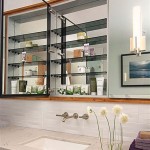How to Screen Mirror to a Philips Smart TV
Screen mirroring allows users to display the content of a smartphone, tablet, or computer screen on a larger display, such as a Philips Smart TV. This functionality offers a convenient way to share photos, videos, presentations, and more with a larger audience. This article outlines various methods for achieving screen mirroring with a Philips Smart TV.
Philips Smart TVs generally support several screen mirroring technologies. The most common are Miracast and Chromecast built-in. Determining the specific technologies supported by a particular Philips TV model is crucial for successful screen mirroring. This information can usually be found in the TV's user manual or on the Philips support website.
Miracast is a wireless technology that allows devices to discover and connect to each other directly. Many Philips Smart TVs have built-in Miracast support. To initiate screen mirroring using Miracast, one typically navigates to the TV's input source menu and selects the "Screen Mirroring" or similarly named option. The source device (smartphone, tablet, or computer) must also support Miracast and have the feature enabled. The connection process varies depending on the device's operating system.
On Android devices, users often find the Miracast feature within the "Display" or "Connected devices" settings menu under names like "Wireless Display," "Cast Screen," or "Screen Mirroring." Windows devices typically access screen mirroring through the "Action Center" notification panel and selecting "Connect." After selecting the Philips TV from the list of available devices, the TV screen should mirror the device's display.
Some Philips Smart TVs utilize Chromecast built-in functionality. This technology, developed by Google, allows users to "cast" content from compatible apps directly to the TV. Many popular streaming services, media players, and other apps support Chromecast. To cast content, users simply need to tap the Chromecast icon within a supported app on their smartphone, tablet, or computer and select their Philips TV from the list of available devices.
Unlike Miracast, which mirrors the entire device screen, Chromecast streams specific content from the selected app. This approach can offer some advantages, such as allowing the source device to perform other tasks without interrupting the stream on the TV. Additionally, Chromecast often provides higher video quality and lower latency for supported apps compared to Miracast.
For Apple devices like iPhones and iPads, AirPlay is the preferred method for screen mirroring. While not directly integrated into most Philips Smart TVs, AirPlay functionality can be achieved through the use of an external streaming device such as an Apple TV. Connecting an Apple TV to an HDMI port on the Philips TV allows users to wirelessly stream content from their Apple devices to the TV.
To initiate AirPlay, users open the Control Center on their iPhone or iPad and tap the "Screen Mirroring" icon. They then select the Apple TV connected to the Philips TV from the list of available devices. The TV screen will then mirror the Apple device's display, enabling users to share content, play games, or deliver presentations on a larger screen.
Troubleshooting screen mirroring issues can involve several steps. Ensuring both the source device and the Philips Smart TV are connected to the same Wi-Fi network is fundamental. Restarting both devices can also often resolve connectivity problems. Checking for software updates on both the source device and the TV is also recommended, as updates can sometimes include improvements to screen mirroring functionality. If the issue persists, consulting the Philips TV's user manual or contacting Philips support may be necessary.
Different Philips TV models might require slightly different navigation steps within their respective menus. Referring to the specific user manual for the TV model is always recommended for detailed instructions. While screen mirroring offers a valuable tool for sharing content, understanding the specific technologies supported by the Philips TV and the source device is crucial for a successful and seamless experience. Keeping software updated on both devices is also important for optimal performance and compatibility.
Connecting external devices, such as laptops, can often be achieved using an HDMI cable. While not strictly screen mirroring, this direct connection provides a reliable and high-quality method for displaying content on the Philips TV. This approach is particularly suitable for presentations or scenarios where a stable, lag-free connection is paramount. Selecting the correct HDMI input source on the TV is necessary after connecting the cable.

How Can I Wirelessly Cast Content To My Philips Tv

How To Install Screen Mirroring App On Philips Android Tv Airbeamtv

How To Screen Mirror Iphone On Philips Smart Tv Free App

How To Mirror Iphone Philips Smart Tv

3 Effective Ways To Screen Mirroring Philips Tv

How To Screen Mirror Iphone On Philips Smart Tv Free App

How To Mirror Iphone Philips Tv

How To Screen Mirror Iphone On Philips Smart Tv Free App

How To Mirror Android Philips Tv

3 Effective Ways To Screen Mirroring Philips Tv








